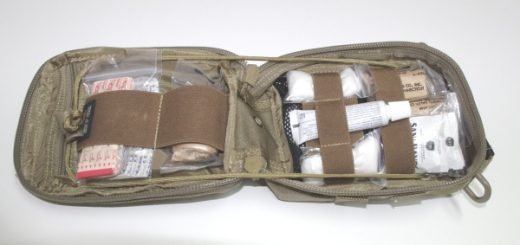Build a Quick and Easy Storage Tube

Learn how to easily build a waterproof storage tube that can be used to cache supplies, stash valuables, as well as protect papers and electronics.

All the parts for this project were purchased at the local Home Depot, but Lowe’s or any local hardware with a good assortment of plumbing supplies should have what you need. There are four parts to the case: the piece of pipe for the body of the tube, the end cap, the female threaded adapter and the threaded cleanout plug lid. Many stores will carry two kinds of pipe white PVC and black ABS. If they have a “Schedule 40” version of the pipe, it will be a little heavier, but much more stout. The biggest technical issue is making sure you have the right kind of adhesive to glue the pieces together. Most PVC pipe glue is not made for use on ABS pipe and vice versa. There is a multi-purpose cement that will work just fine on both types, but do check the labels to make sure you are getting what you need. In a pinch, you could just skip the specialized glue and stick the ends on with silicone sealant if that is all that you had available. If your storage tube might end up underground or stashed away for a while, I’d suggest using the pipe glue, giving it time to cure and then sealing the seams for a little extra redundancy.
A waterproof hard case is one of the easiest ways to make sure items like maps, important papers and small electronics survive accidents and are available when you need really need them. Store bought maps like USGS Topographical Quads can be pretty durable, but last a lot longer with proper care. Home printed maps are less expensive, but are also fragile if printed on plain paper with an inkjet printer. Also, as modern electronics get smaller, they tend to get more fragile. Touch screen smart phones usually have plenty of different cases to choose from, but this is not always true for small radios, cameras, MP3 players and GPS systems.
Also, there are times when you might want the cache some extra supplies or valuables away in a place where folks are not likely to look. This waterproof storage tube could be be buried in the backyard, under a large rock and stay undiscovered for years. Or, it could be hidden in plain sight by mounting it in the attic or basement, next to other, similar looking plumbing pipes.

Plastic plumbing pipe is commonly available in two, three and four inch sizes, so it should not be a problem to make a case for your needs, with a little creativity. The pipe can be used in longer sections, for something like a fishing rod or gun case. But, cutting it short for a small currency stash hard case is just as easy. As with many projects, the secret to success is in the prepwork. When cutting the pipe to the needed length, make sure the ends are clean and even. Take a piece of sandpaper and touch up the edges, if there are burrs. Make sure all of the surfaces to be glued are clean and primed.

Two or three turns of Teflon tape on the threads of the cap will help it open and close more smoothly and seal up a bit tighter as well. Some stores sell the generic version of this product as PTFE Thread Seal Tape, which is fine.

When assembled, the threaded end should look similar to the example shown. Once note of caution is to leave the threaded cap on the workbench until the glue dries so that the case is not accidentally glued shut. That would be rather disappointing.

This tube case is designed with a cap on the tail end, but another threaded cap could be used to allow access through both the top and the bottom. Using just one threaded cap eliminates a possible point of failure.

The finished product is a waterproof case that is a perfect fit for the maps and papers that we are trying to protect. If a case is being made to hold small electronic devices, make sure that there is enough room inside the case to pad the items. Otherwise, they might bang around inside the case if it should take a tumble. Both the hardware store and the local craft store will carry multiple padding options, depending on your budget and how much space you need to fill. Don’t rule out what you might have at hand, like sections of an old closed cell foam camping mat. A little creativity will give you plenty of options with this project.





